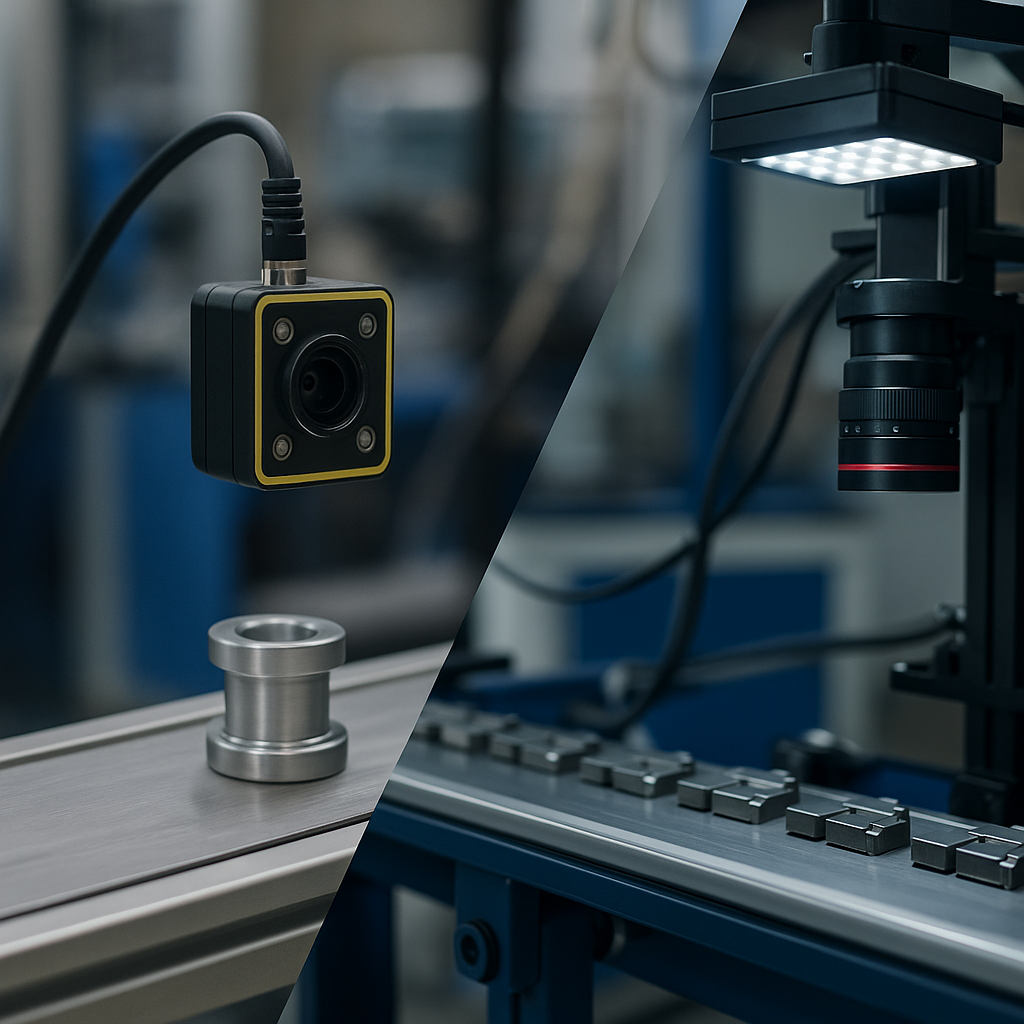Smart Cameras or Custom Projects? Choosing What’s Right for Your Factory

Quality control on production lines is no longer a “nice to have”—it directly shapes efficiency, cost, and competitiveness. When it comes to vision-based inspection, most plants face a familiar fork in the road: adopt an off-the-shelf smart camera or commission a custom-engineered solution tailored to the line. Both approaches have merit. The question is which one fits the specific context of the process, the parts, and the performance targets.
Smart Cameras: Strengths and Boundaries
Smart cameras can be compelling at first glance. They’re easy to source, quick to install, and start handling standard checks with minimal setup. In stable environments—consistent lighting, well-defined features, clear pass/fail criteria—they deliver results fast. They also tend to look budget-friendly upfront, which makes them attractive for straightforward applications.
As process complexity rises, however, the picture can change. Fixed function sets may not stretch far enough when optics need to be rethought, software must handle nuanced edge cases, or AI-level analysis is required. What begins as a “practical quick win” can turn into a system that demands frequent tweaks, absorbs unseen technician hours, and struggles to deliver the expected return. In these scenarios, the system can appear “installed” yet not truly commissioned to the target performance level.
Custom Projects: Built Around the Need
A custom approach starts from a different premise: don’t adapt the line to the product—design the solution around the line. That typically means a structured path: discovery and data collection, optical architecture (lens, filters, lighting geometry), camera configuration, AI-assisted algorithms, station layout, and reporting/integration designed for the plant’s reality.
The payoff is broader than solving a single check. Complex inspections can be consolidated—sometimes even multi-check flows on a single camera—and linked end-to-end. A standard reporting layer often accompanies the system, enabling teams not only to catch defects but also to monitor process capability, trends, and drift. Because calibration, optical stability, and thresholds are matured up front, the system is far less reliant on ongoing “nudge it until it works” adjustments.
Cost Perspective: Cheaper Now, Costlier Later?
Cost often drives the decision, but the critical lens is total cost of ownership (TCO) and realized ROI, not just the price tag.
- Off-the-shelf smart cameras can look economical at the start. Over time, performance gaps, recurring parameter tuning, and small but frequent disruptions can erode the initial savings. In many plants, the system is nominally “live” but requires a prolonged period of iterative optimization before it consistently meets detection/false-alarm targets.
- Custom projects require more engineering up front. Yet with optics, algorithms, and integration purpose-built for the station, the true commissioning tends to be shorter and more definitive. Many providers commit to stability and response SLAs, which reduces hidden internal workload and makes the ROI more predictable over the system’s life.
A practical way to frame the trade-off is to ask: Where do you want to spend time—during the first two days, or across the next two years? The right answer depends on the complexity of the line and the performance you must sustain.
Integration and Day-to-Day Use
Custom systems typically treat MES/ERP/PLC integration, IT security, versioning, and operator experience as first-class elements of the scope. The result is a ready-to-use interface that doesn’t require users to understand computer vision to run the line. While many smart cameras can integrate, the depth and flexibility are usually limited by the vendor’s predefined framework.
Bottom Line: Which One, When?
- For stable, well-defined checks on uniform parts with controlled lighting, smart cameras are a fast, pragmatic answer.
- When you face variable surfaces, tight tolerances, multiple inspection steps, reporting requirements, and deeper integration, a custom project is more likely to deliver reliable, sustainable performance.
Selecting the right path is less about today’s invoice and more about how quickly—and how durably—you can hit target performance. Evaluate the complexity of your station, the maintenance load you’re willing to carry, the data and reporting you need, and the lifetime economics. That’s what ultimately determines whether an off-the-shelf camera or a tailored system is the smarter investment for your factory.
